The beginnings
The family history has ancient roots: in the Theresian Cadastre of 1751, Primosic was registered as owner of some lands, cultivated under vines, in Oslavia.
1751
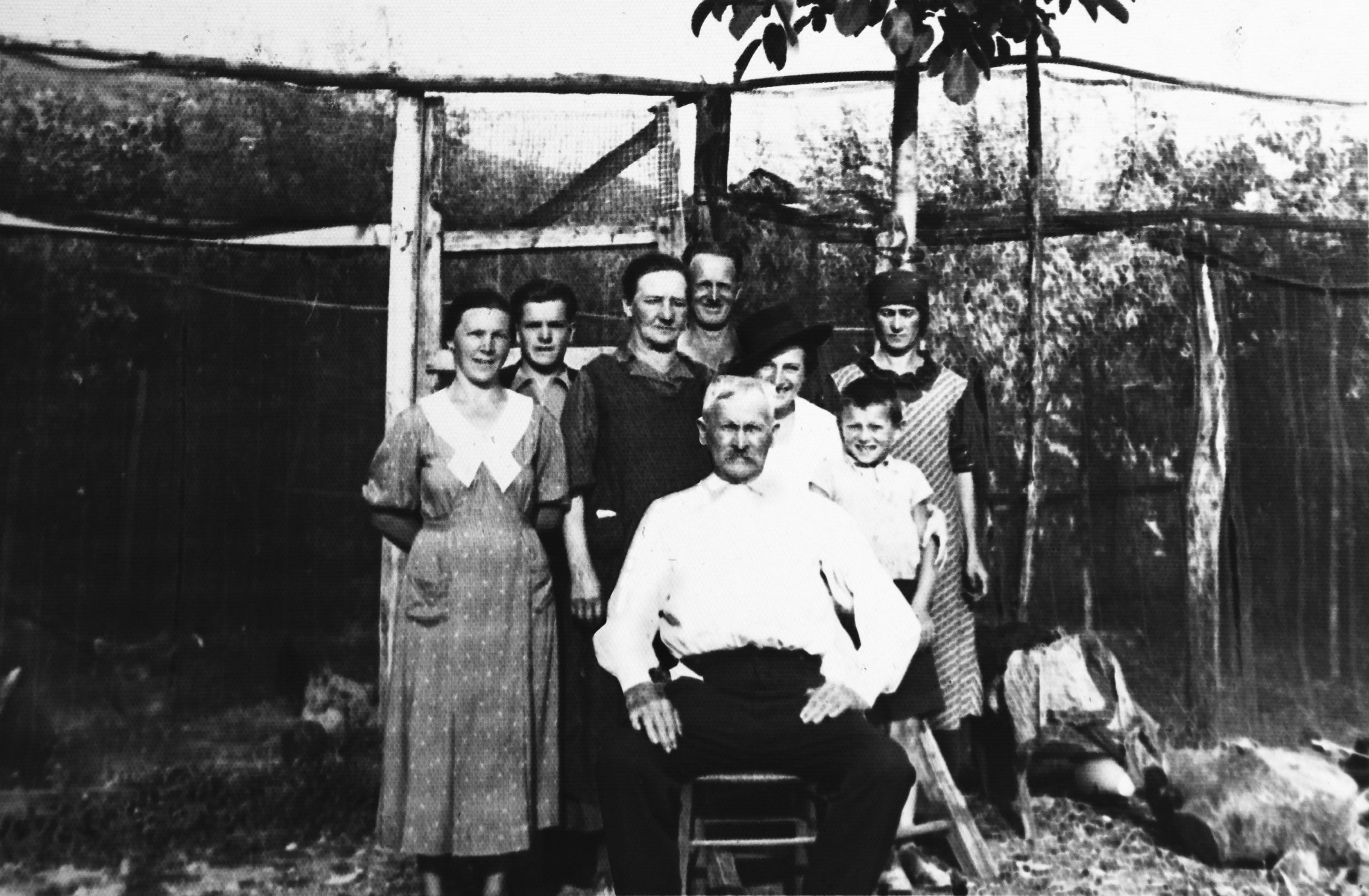
Karl, Karlo, Carlo
Karlo Primosic was born. Thanks to him, still today the Primosic family is known in Oslavia as “Karlo’s people”. At the end of the 19th century, Karlo used to make bulk wine that, through the “Transalpina” railway, was transported to Vienna in large wooden barrels. At that time, Oslavia was part of the Austro-Hungarian Empire, guarantor of the peaceful coexistence between Slavic, Latin and German people living in the Gorizia area. The Collio was considered «the garden of the Empire», and used to supply the wine, olive oil, fruits – especially cherries – and vegetables that were brought to the best tables of Vienna.
1868
World War I
With the outbreak of the First World War, Oslavia found itself in the middle of the Eastern Front battles, and was heavily bombed: the village was totally destroyed, and the roots of the vineyards as well. The Primosic family was forced to move from the Isonzo Front to the Alps.
After the war, the production of wine was totally suspended in Oslavia: it seemed that nothing could grow on the “dead hill” anymore. The luckiest men came back from the Front; in 1919, women in Oslavia made the last grape harvest alone.
1915
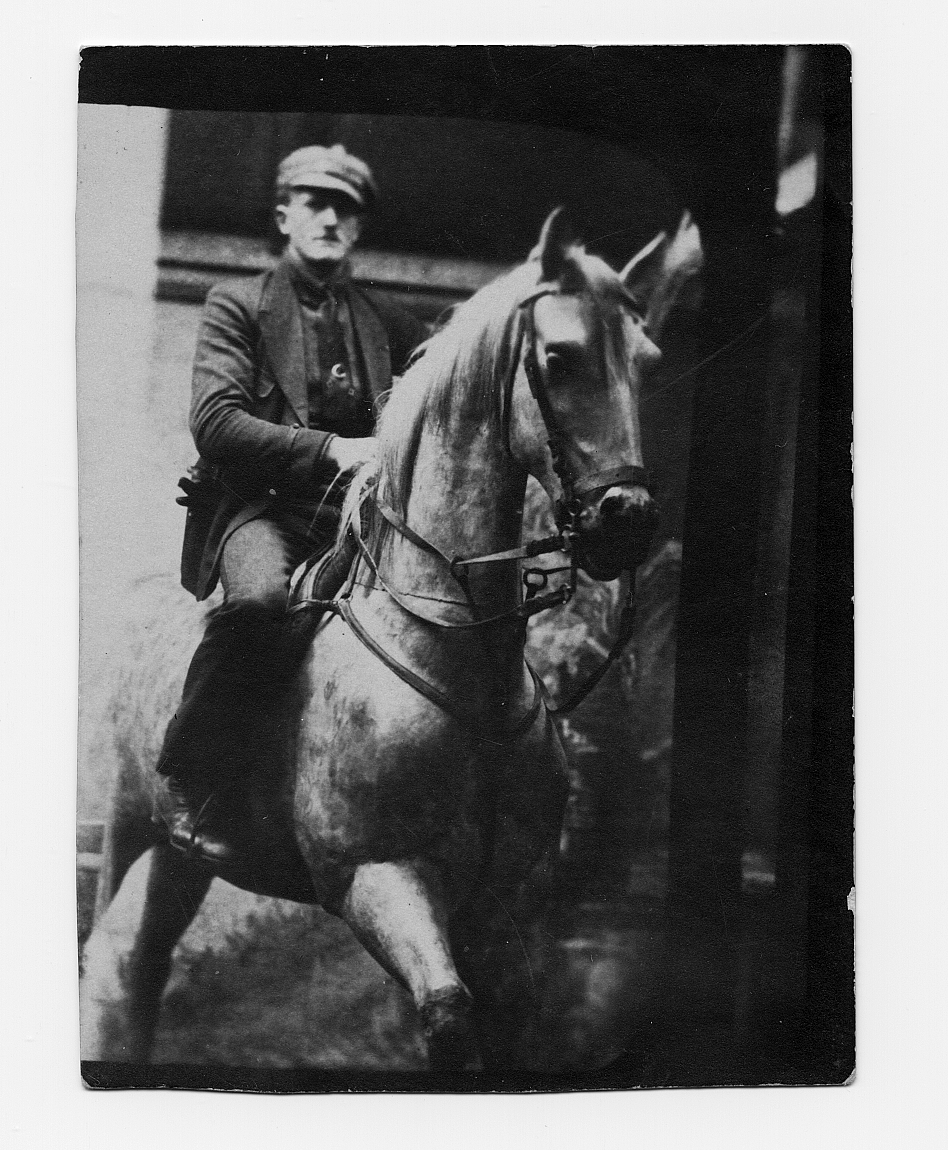
Profession: farmer
Jožef Primosic, Karlo’s son, came back to Oslavia from the Front. Together with his father, he began to rebuild the old family house, to replant the vineyards, giving new lifeblood to the Primosic family. On his Italian identity card, issued in 1937, was written “Profession: Farmer”. He was proud of it because, as he used to say, “working the land with your own hands is like raising a child”.
1922
Oslavia between the two World Wars
Between the First and the Second Word War, the farmers in Oslavia had to face the reclamation of land and the reconstruction. Those were very hard times, characterized by misery and hard work. Oslavia had been totally destroyed: the church, the town hall and the main square did not exist anymore. Only their attachment to the land permitted them to find the strength and the determination to start over.
1945
Silvan
Jožef died aged only 55, leaving 3 of his 6 children. Silvan became head of the family when he was only 12 years old. In 1956 he took the reins of the family business and began to make wine: at the beginning he used to make just bulk wine, but soon he began to bottle his wines.
1953
The economic recovery
In the 1950s and 1960s, Oslavia took advantage from the economic recovery of the Country (the so-called «Italian economic boom»); in the wine sector, these years represented both a quantitative and qualitative important progress, with the result that today the wines from Collio represent an excellence worldwide recognized.
1960
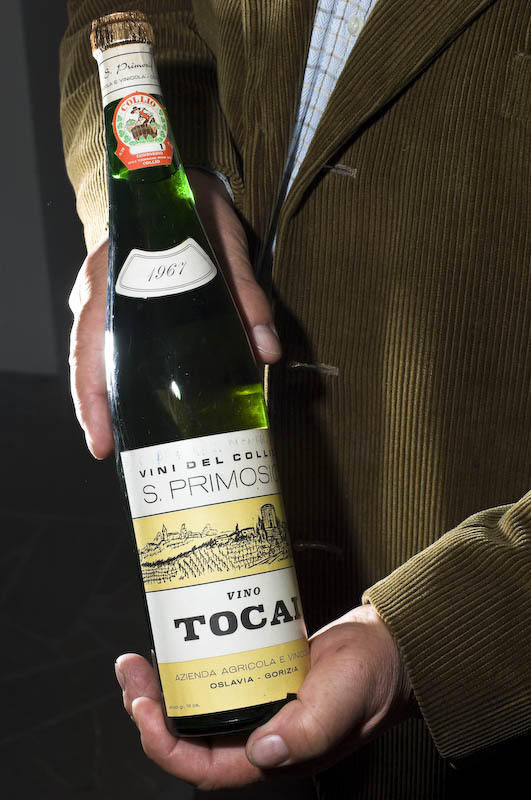
The ``Numero 1``
The grape harvest 1964 was the first one totally bottled with the brand “S. Primosic”. Silvan’s wife, Lilijana, helped him with his activity and drew the first labels, with the landscape of Oslavia. In those years the Collio Consortium was founded, and Silvan was one of its first members. The “Numero 1”, the very first bottle of the DOC Collio denomination, comes from the Primosic winery: it is a Tocai, vintage 1967.
1964
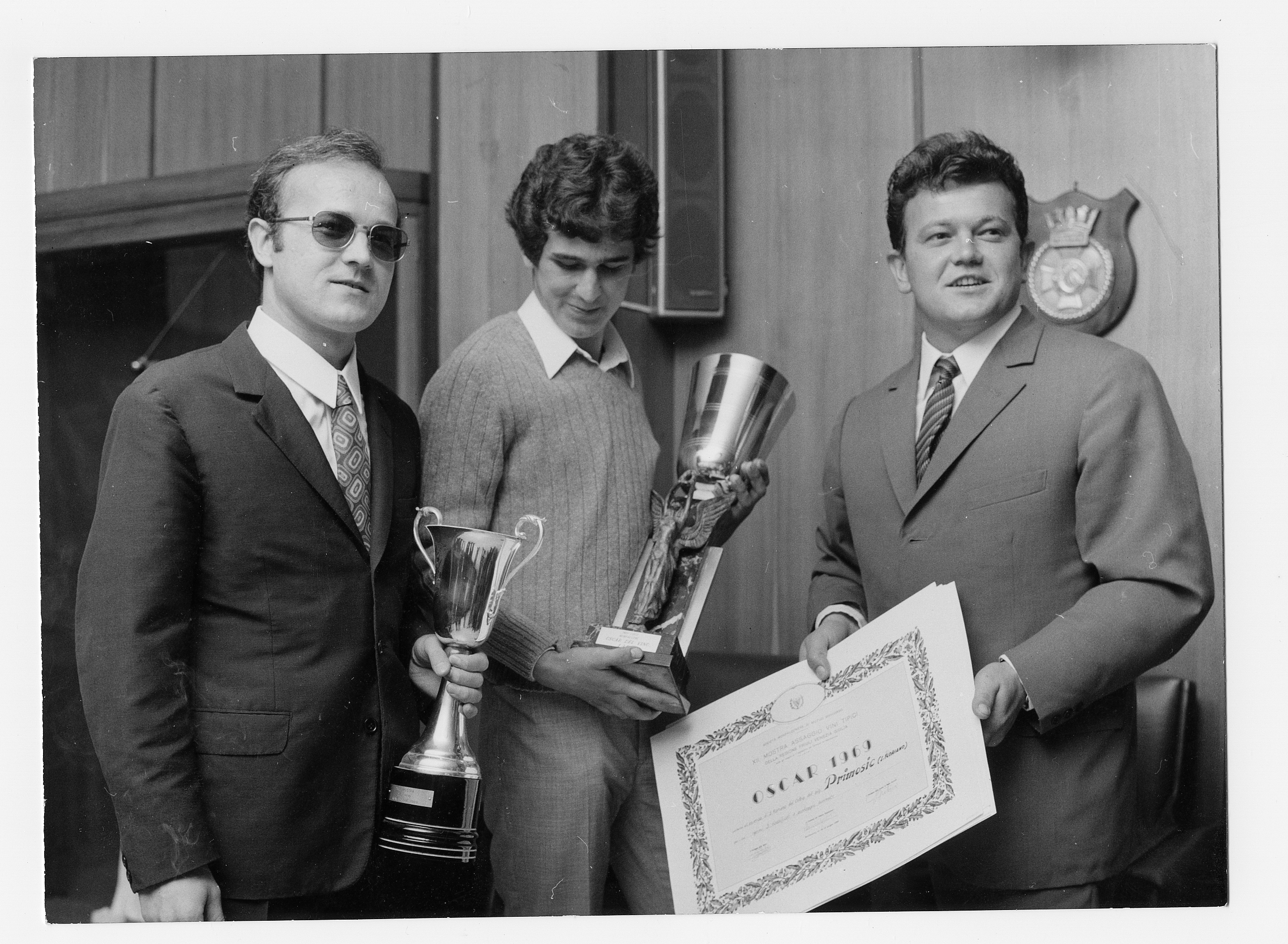
The Wine Oscar
Silvan was awarded with the Wine Oscar. This was the first important recognition of his work, and a prestigious praise for his choice to abandon the production of bulk wine, and focus on professional winemaking, with a modern cellar and new oenological know-how.
1969
Veronelli and the pleasure of wine
Luigi “Gino” Veronelli, an Italian gastronome, wine critic and intellectual, used to present the TV programme A tavola alle 7 (At the table at 7), where, for the first time, wine went on TV without being necessarily paired with food. Wine stopped being just a kind of nourishment, and became a leisure. The idea of “aperitivo” was born in those years, and Pinot Grigio became the most fashionable wine. It was a moment of great success for white wines from the Collio.
1974
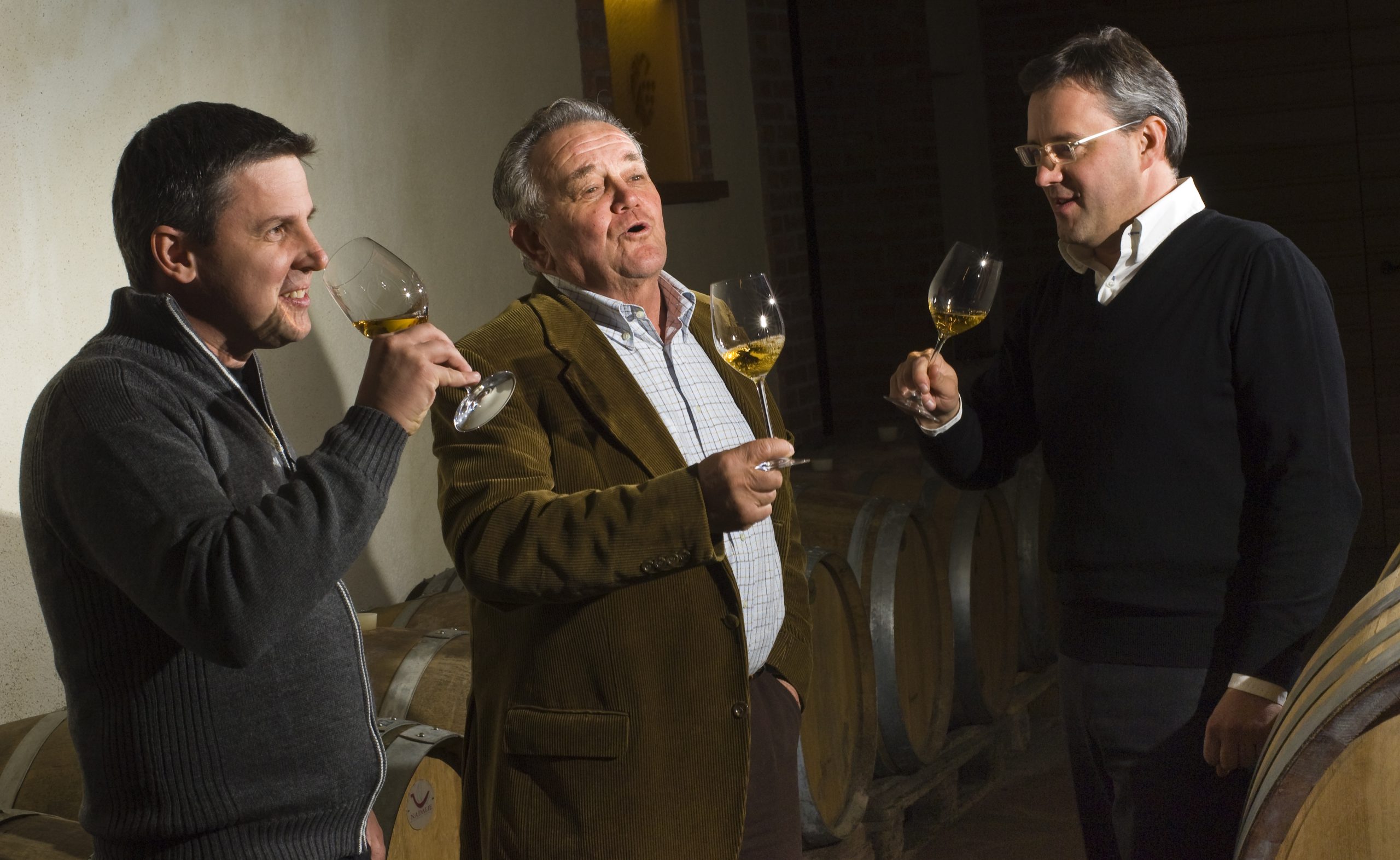
Marko & Boris
Marko, Silvan’s son, after his studies in Oenology, started working at Primosic winery together with his father, followed by his brother Boris a few years later. Marko and Boris decided to divide the family lands into “micro-zones”, in order to identify the best crus, with the oldest vines and the best exposure, which used to give the best grapes. These grapes were used exclusively for a small group of wines – the “Selections” –, aged in wood in order to obtain more power, complexity and potential of aging. The result of this work today is represented in the wines of the “Collio Collection”: Klin, Chardonnay and Metamorfosis.
1989
The Ribolla Gialla in the DOC Collio
The Ribolla Gialla grape variety became part of the Collio DOC regulation. Until 1990, this indigenous variety was considered a poor grape, not worthy of being inserted in the Collio appellation together with more “noble” grape varieties like the Pinot Grigio or the Sauvignon Blanc.
1990
The first sales abroad
Marko, committed with the promotion and sales of the Primosic wines in Italy and abroad, became the commercial director of the winery, and started travelling first across Europe, and then to America and Asia. Marko and Boris, who have always been very linked to the Ribolla Gialla variety, over the years did their best to valorise its characteristics and make it more important. During the grape harvest 1998 Boris, who was more and more engaged with the work in the cellar, experimented the first brief macerations of 3-4 days at controlled temperature.
1996
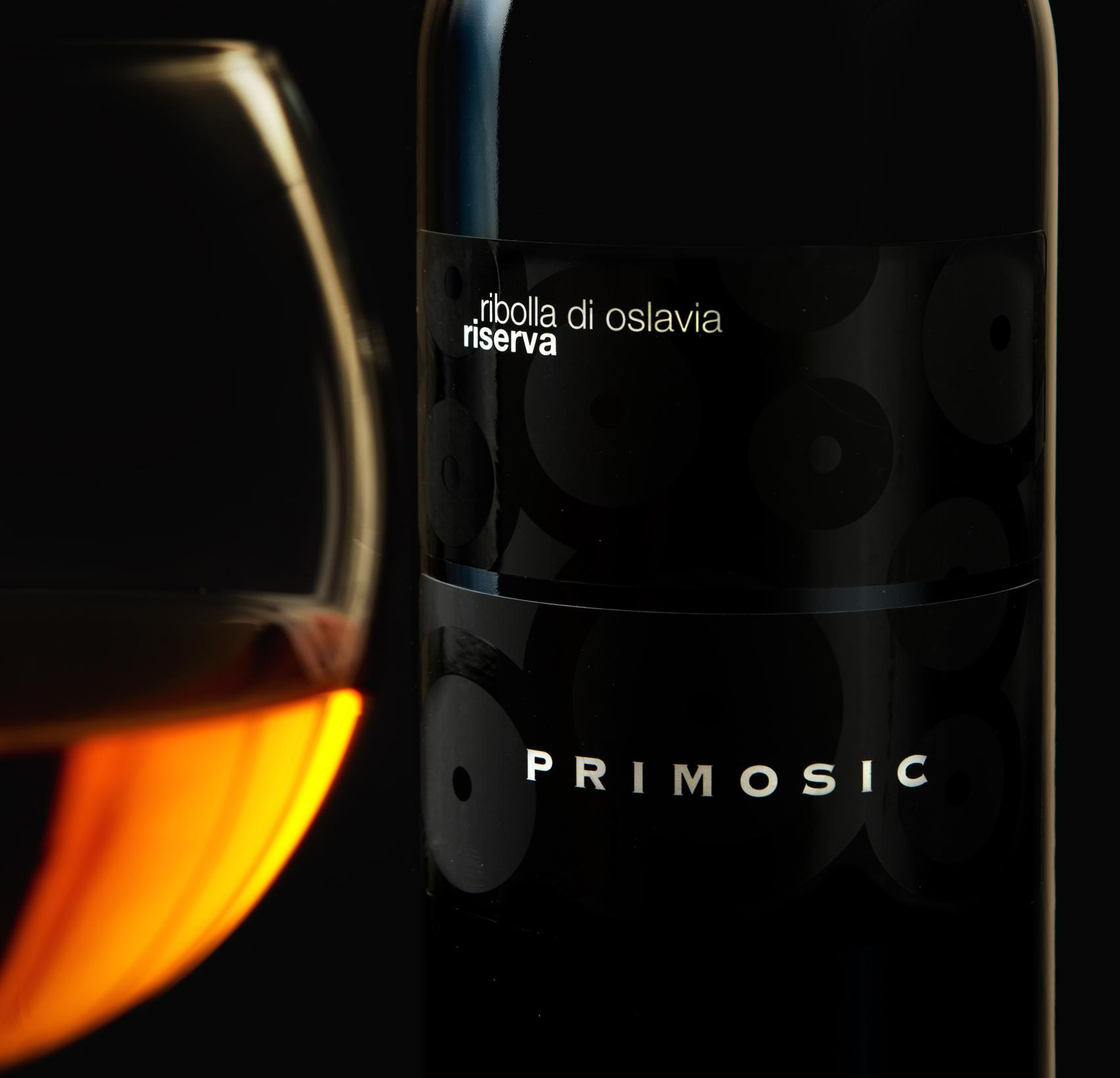
Innovation and experimentation
This is the first vintage of the Ribolla di Oslavia made with a long maceration, without temperature control. Marko and Boris decided to try to ferment the Ribolla Gialla grapes in contact with their skins, in order to extract color, aromas and tannins, so that the wine would have more structure and more aging potential. The maceration is an ancient winemaking technique that was used in Oslavia before the First World War, was then abandoned, and finally rediscovered between 1990s and 2000s.
2003
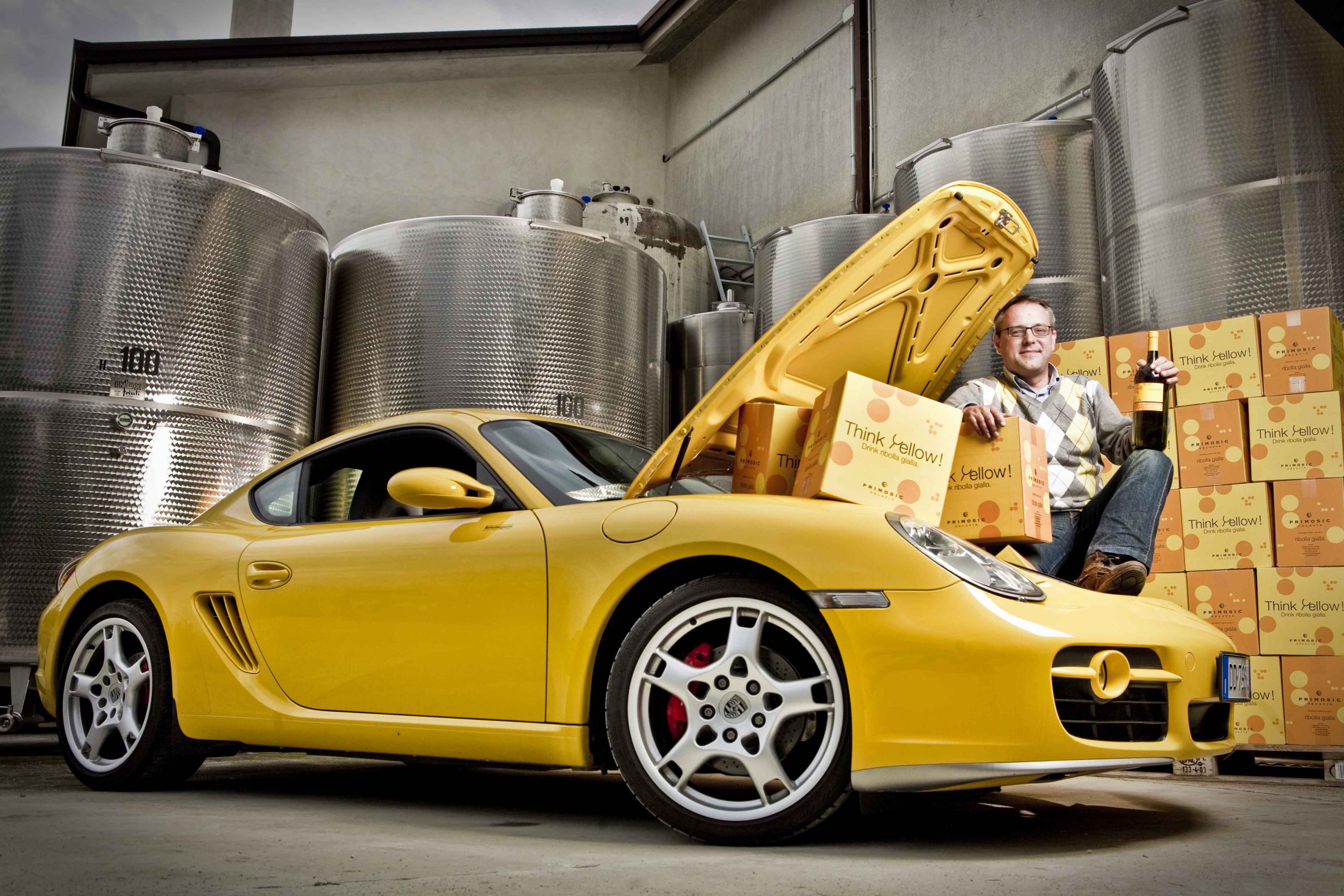
Target: Ribolla Gialla
The first edition of “Tiro Rapido” took place. This project was born in collaboration with Porsche Italia, and made the Ribolla Gialla known all over Italy. A campaign dedicated to the color yellow and supported by the payoff “Think Yellow”, that linked wine, literature and motors. “Tiro Rapido” was a competition for aspiring writers: partecipants were asked to write a mistery story in 911 minutes, which had to contain the word Ribolla Gialla.
2005
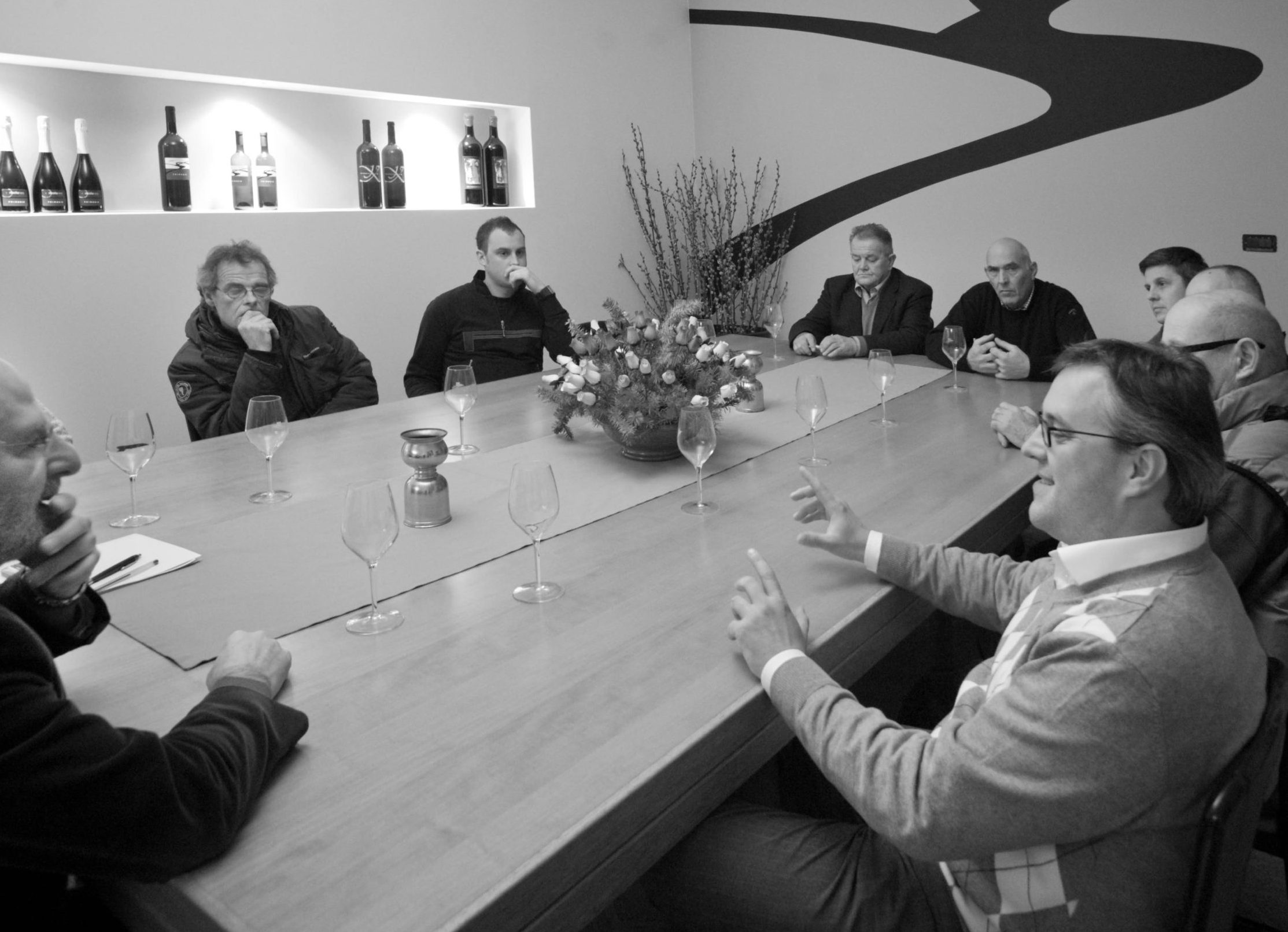
The foundation of the APRO
The Association of Producers of the Ribolla di Oslavia (APRO) was born at the initiative of Marko Primosic and Stanko Radikon. In the picture, from left to right: Gigi Brozzoni, Dario Princic, Robert Fiegl, Silvan Primosic, Nicolò Bensa, Boris Primosic, Franco Sosol, Stanko Radikon, Marko Primosic.
2010
The rebirth of an historic vineyard
The company bought a new vineyard, where the Ribolla di Oslavia has been planted. Meanwhile, some of the oldest cru owned by the Primosic family were dedicated to the production of grapes for the orange wines “Skin”. Thanks to this work of zonation, more and more attention was given to orange wines, which by now represent an important part of the production of the Primosic winery.
2020
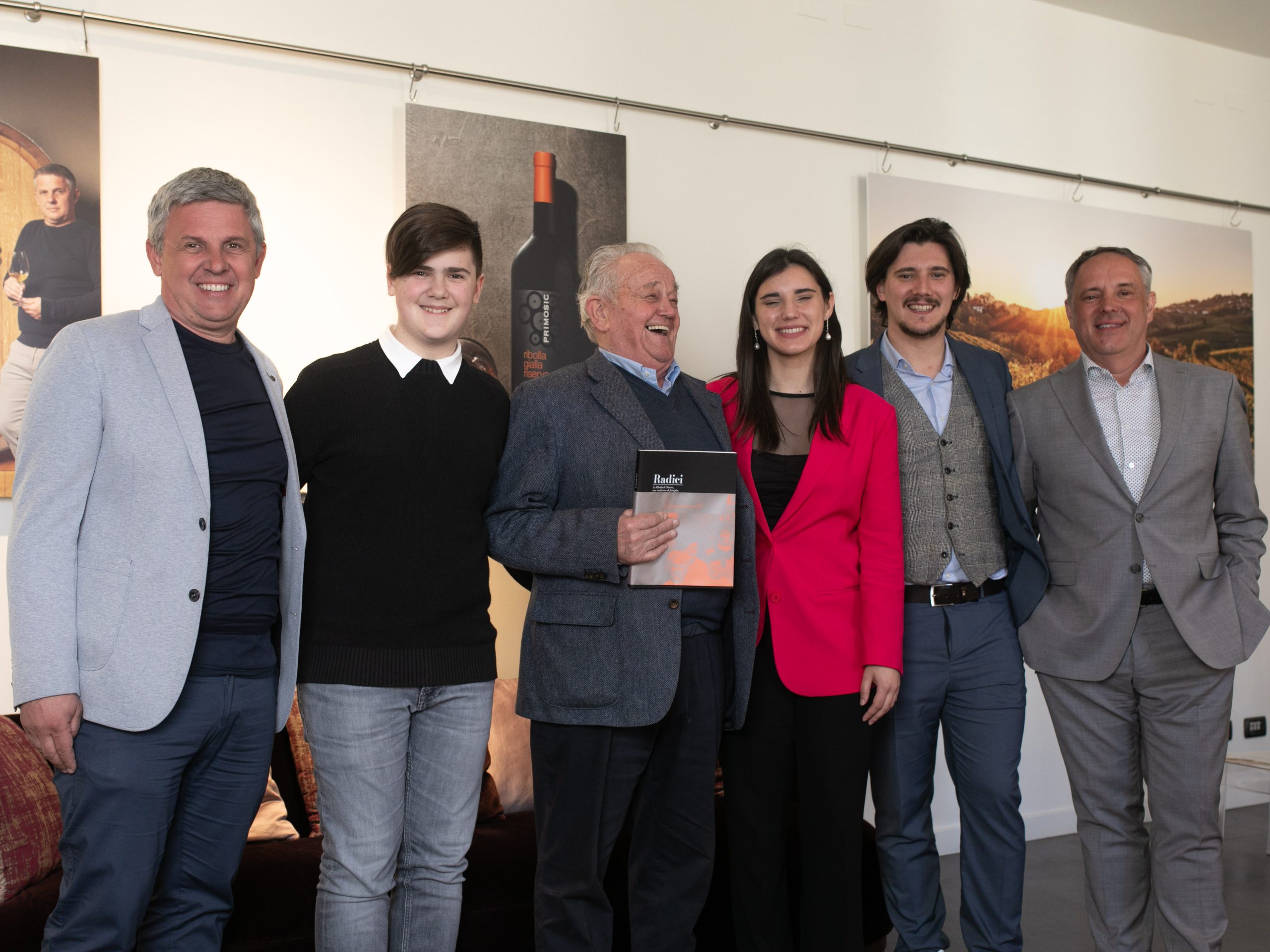
The wine of tomorrow
A new generation, composed of the cousins Nicola, Greta, Aleksija and Elia, is getting closer to the family business, with curiosity and respect. This is the right moment to tell about the path that we have been on until now, and leave a trace of the family history, traditions and values to our children, through a company Monography that tells the story of five generations of winemakers, linked to the evolution of the territory and its unmistakable wines. The book “Roots – Ribolla di Oslavia, a family tradition” was officially presented to press and collaborators on March 29th in Milan, through an emotional tale of all the family members.
2023
“The future of the winery is in good hands, and the continuity is ensured by my sons and grandsons, who have good ideas to bring about change, are deeply linked to Oslavia, and have roots able to resist even Bora”. Silvan Primosic
